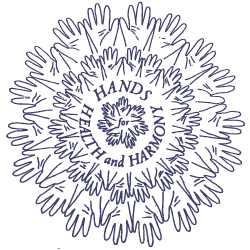
Craniosacral Therapy FOR INFANTS & NEWBORNS | PEDIATRIC Occupational Therapy
What is Craniosacral Therapy?
It is a gentle hands-on technique that detects and realigns imbalances in the boney structures, soft tissues and rhythmical flow of fluids throughout the cranium, spine and sacrum. Imbalances within the craniosacral system may be a contributing cause for sensory, motor or intellectual dysfunction.
Why might an infant need Craniosacral Therapy?
Using the light touch of specific Craniosacral Therapy techniques, the rhythm and alignment of each cranial, spinal and pelvic structure can be brought back into balance. This realignment is important to allow the developing brain and spinal nerves adequate nutrition from the cerebrospinal fluids that bathe them.
Structural misalignments of the craniosacral system can also impinge nerves, create muscle spasms, and reduce functional capacity throughout the body.
A newborn or infant could need Craniosacral Therapy to allow their body to recover as quickly as possible from the physical and emotional stress of the birth process. Unfortunately, muscle spasms, torsion of the neck, spine and shoulders, excessive cranial molding or fractures, and hematomas are often part of a baby's first physical experience.
A great number of neurological and structural problems experienced in adult life have their origin in the stress of birth. In recent years, Craniosacral Therapy has come to be regarded as a highly effective treatment to help correct these problems at their inception.

Craniosacral Therapy can have profound benefits for the developmental potential of newborns and infants.
Signs & Symptoms
Could your infant benefit from Craniosacral Therapy?
- Disturbed sleep patterns.
- Onset of crying when back of the head or spine is touched.
- Obviously misshapen head 24 hours or more after birth.
- Trauma due to forceps or suction delivery.
- Prolonged labor after full dilation.
- Cranial fracture and/or hematomas.
- Excessive muscular stiffness or floppiness.
- Eyes that don't move or focus together.
- Difficulty nursing or with latch.
- Asymmetrical movement: one side of your baby is less active than the other.
- Shoulders or hips that don't look even.
- Head turns more to one side.
- Your baby prefers sleeping or nursing with head turned to only one side.
- Gas pains or colicky behavior.
- Difficulty swallowing.
How many sessions might be needed?
Every child and birth experience is different.
Every response to Craniosacral Therapy is different.
If the birth stress is mild and treated soon after birth, often only one session is needed to help rebalance the system. If the trauma is more severe or is not treated soon after birth, patterns of compensation may require a series of sessions. Practices at home, outside of therapy sessions can also aid your baby's improvement.
When and where to seek Craniosacral Therapy for my infant?
A general rule of thumb: the sooner the better. Your baby may be experiencing discomfort or pain that can be relieved. The longer you wait, the longer it may take to rebalance their system.
Contact me as soon as your physician or midwife feels your newborn is medically stable, and you sense your infant's system is off balance. Your baby can be treated minutes after birth, at home, in your arms, while playing, nursing, or sleeping.
If the birth stress was mild, wait until you and your new little one are settled into a sense of home. If the birth trauma was more severe, schedule a consultation promptly. We can arrange sessions to meet your immediate needs – uncontrollable crying or nursing difficulties, for example, might take precedent.
Can older children benefit from Craniosacral Therapy?
Absolutely.
However, the earlier any type of imbalance is detected and addressed, the easier it is for them to adjust.
Contact me if you think your older child may have required, but did not receive a rebalancing after birth. We can discuss a best approach for them now.
Are all Craniosacral Therapists trained and qualified to treat infants?
No.
The hands that treat your new baby need multiple years of experience assessing and working with children in movement. Treating an active child is much different than treating a quiet, communicative, cooperative adult.

Browse our
library of images.
Meet Elana
Pediatric Occupational Therapist since 1980. Specialization in Biodynamic and Biomechanical Craniosacral Therapy with infants following training with John Barnes; the Upledger Institute; Regi Boehme since 1987; The Barral Institute 1996; Michael Shea 2001; and numerous Osteopaths. Training as a Midwife assisting in over 100 births and 300 newborn exams in 1993.
Extensive training including movement assessment & facilitation, sensory intregration, visceral & neural manipulation, lymphatic drainage, meridian balancing, jin shin jyutsu, myofascial release and currently studying medicinal plant oils/hydrolsols/essences. Santa Fe resident since 1993. Mother since 1998.
QUALIFICATIONS
Pediatric Occupational Therapist
Pediatric Craniosacral
Visceral Manipulation
Lyphatic Drainage
Neural Manipulation
Energy Balancing
eXPERIENCE
Practicing since 1980
Trained as a Midwife
Mother since 1998
HOME BASE
Santa Fe, New Mexico
Elana's expertise in this advanced form of therapy and healing touch could offer your child, or a child you love, a new way of experiencing the world.
My intention
My goal is to help your little one avoid habitual patterns of compensation, and I am dedicated to facilitating inner health and harmony as each of our birthright.
is to facilitate new souls in their journey to fulfill their highest potential. I want to offer newborns, infants, and pregnant women my expertise and energy—sensitive, loving hands, trained to help release physical and emotional stress.

From the womb into the world...
Gentle, yet deeply nurturing and soothing.
Craniosacral Therapy for pregnancy.
Contact me.


